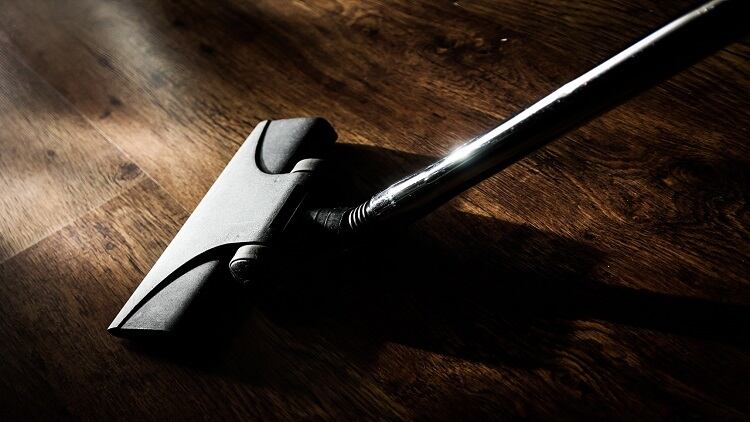Bates Butchers & Delicatessen, in Market Harborough, Leicestershire, has a top food hygiene rating scheme (FHRS) score of five.
Yet Leicester Magistrates’ Court fined the business £4,000 plus £4,500 costs and a £170 victim surcharge on 2 May after the local authority found a catalogue of hygiene blunders at Bates’ separate storage and food processing site last year, which included filthy food equipment, food preparation and storage areas. From this site, Bates Butchers & Delicatessen supplies local pubs and restaurants.
The case highlights how the public face of a business – such as a pub, restaurant or shop – can be rated with a top score, yet the food it sells could have come from filthy premises. How can that be right?
This apparent flaw has occurred because, as the Food Standard Agency (FSA) confirms, the FHRS in England and Northern Ireland applies only to food businesses supplying food directly to the consumer. Scotland, which operates the Food Hygiene Information Scheme (FHIS), is also consumer-facing only.
Only in Wales does the FHRS also apply to “trade-to-trade” businesses, such as food manufacturers and wholesalers. This enables pubs, restaurants and retailers to know at a glance whether their suppliers are up to scratch.
Obvious loophole
Christopher Barber, founder and chief executive of Catering Business Food Solutions, says The Morning Advertiser (MA) is “absolutely right to identify a very obvious loophole. It’s extraordinary you can get an FHRS score of five and yet your supply chain could be an absolute shocker.
“It’s brilliantly observed. It’s a huge oversight and by bringing it to the public’s attention we can get something done about it.”
The scores were supposed to give the public confidence “but what you’ve uncovered is that a piece of meat for sale could have theoretically been nibbled by a rat at the producer’s and that would still be a five-star experience as far as the consumer is concerned because the score doesn’t necessarily truly reflect the supply chain”.
Tim Lang, professor of food policy at the Centre for Food Policy at the City University of London, points out that after the BSE and salmonella scares of the 1980s, a new risk-based assessment system, Hazard Analysis and Critical Control Points (HACCP) – which is supposed to be about “total supply chain management” – was implemented.
But this is all too often about “box ticking”, he says. Local authorities have had their budgets “hammered” since 2010 and that system is “fraying at the edges”.
Lang confirms: “What you point out is a potential flaw/difficulty/ breakdown point. You’re absolutely right but unless each [food] item was to have a supply chain risk management system in place, you’re likely to have the sort of failing you are pointing to.”
Horsemeat scandal
The horsemeat scandal showed that even the biggest companies could be selling products that they thought contained beef when in fact it was horse.
“Supply chains are so complicated that it’s actually quite hard for everyone to know everything,” says Lang.
The National Aeronautics and Space Administration created HACCP “to try to make sure someone up in the sky going round the moon didn’t get diarrhoea, incapacitated, food poisoning and die. So the point was to have total control on every single item that went in to feed the astronauts before and when they went into space”, says Lang. “The reality is it is nigh-on impossible to get that degree of control on planet Earth.”
Barber questions whether independent businesses (such as single-site freehouses) are really going to regularly inspect their food producers from a due diligence point of view, HACCP and
general health and safety of their own supply chain.
He says: “With the best will in the world, very few small businesses are going to do that.”
The FSA says: “A good rating means that it (a consumer-facing food business) complies with food hygiene legislation at a point in time, but it still remains the legal responsibility of the business owner to serve food that is safe.”
However, a spokesperson says: “We will be looking at the impact of including trade-to-trade businesses in the scheme in Wales to assess if this should be introduced in England, too.”
Food regulation review
Scotland, in common with other parts of the UK, is reviewing food regulation in light of Brexit.
Lorna Murray, head of enforcement delivery at Food Standards Scotland (FSS), says the proposed review of Scotland’s FHIS is to help promote good food safety practices.
The fundamentals will not change, she says, in that food businesses will always have to ensure the food they produce is “up to standard”, and FSS’s primary concern is putting public safety first.
She says: “We are always looking to improve and that means we are undertaking a full review of the operation and presentation of FHIS, including consideration of a mandatory [display] scheme.
“We have been seeking the views of the public and industry to ensure any revised scheme works for both consumers and businesses.”
Displaying scores
The display of hygiene performance indicators are not mandatory in England and Scotland, which is another weakness. Unless consumers look up scores on the FSA website, or the pub of their choice voluntarily displays its level, customers will be none the wiser until, at worst, they spend time at HLP (Her Lavatory’s Pleasure).
The FSA, in its Regulating our Future blueprint published on 19 July last year, says that “strengthening the robustness and resilience of the FHRS is a key goal, including ensuring that it is sustainable and that there is mandatory display legislation in England”.
An agency spokesperson tells MA, it believes the FHRS is “a robust and resilient scheme” that gives transparency to consumers about hygiene standards so they can make informed choices.
“We are working now to ensure that the scheme can continue to operate effectively and successfully as part of the changing regulatory system being developed as part of our Regulating Our Future programme.”
Lack of consistency
Bob Salmon, director of the Food Solutions consultancy, says another weakness is the many different interpretations of the rules.
“We have heard that some authorities regard level three [FHRS] as OK and anything above that is only achieved by best practice.” But the original idea was for level five to indicate compliance, he says.
“Other authorities say that no one operating in premises that are old can get more than a level three. This means that those operating in super new all-shining kitchens in a traditional old building can never exceed a three, which appears foolish.”
There is a difference between compliance and good practice, Salmon explains. “A business may be compliant with the regulations and get level five. A neighbouring business may have spent a lot of money to be all stainless steel and have the latest equipment but they would get no recognition for this and would still be a five. You may ask whether that is fair.”
Salmon claims some of the smallest businesses are inspected two or three times a year whereas bigger ones may only get visited every two or three years. “That does not seem to us like risk
control,” he says.
Notice is sometimes given to larger businesses an imminent inspection, which Salmon argues could be considered a weakness of the system.
An FSA spokesperson acknowledges circumstances when it is “advantageous” to give advance notice “particularly when the purpose of an intervention is to see a particular process in operation”.
Authorised officers must exercise discretion in this area guided by the overriding aim of ensuring compliance with food legislation, the spokesperson says.
Barber adds it is not just the inconsistency between different inspectors and local authorities but also the different UK systems that are weaknesses.
“Surely if we’ve got regulation within the UK we should, at the very least, have something that is consistent.”
John Golton-Davis, a director at Food Solutions, agrees. Poole Borough Council hired him a few years ago because it was worried about costs. He surveyed businesses in the Dorset town asking them what score they equated with food regulations compliance and they all said level five.
He did the same survey among environmental health officers (EHOs) in Dorset and they all said level three.
Golton-Davis asked the FSA what it should be and the agency said level five. “That is the problem. Because you’ve got this tiered system, each EHO sets the rules so it’s inconsistent and the public can’t understand what it means.”
Barber believes the biggest weakness is the monitoring of the system. “There should be more foot soldiers who cannot just police the system, but be out there to help and advise.”
On the ground
Piers Baker, who owns Essex pubs the Sun Inn, in Dedham, and the Church Street Tavern, in Colchester, says that, historically, the Sun Inn has had a score of four, which he believes to be a fair reflection because the kitchen needed a refurbishment.
However, the premises was upgraded to a five just before the refurbishment took place in January. “It seems a bit odd that for six years we had a score of four and then all of a sudden a five before the refurb when all of our procedures and practices were the same. It was a different inspector. You get a different inspector every time, which is a weakness of the system.”
Baker disagrees that the display of the FHRS score should be mandatory because “customers don’t know a score of four is OK and they don’t know why you may have lost a mark.”
One pub owner, who did not want to be identified, got awarded a level one at one of his houses. “We hadn’t managed a chef who we thought was in control and we got rid of him. We are waiting for our re-score.
“The councils don’t have the resources to follow up and check on the [remedial] work so [the score] is a snapshot in time that can damage a business or reward a business,” he says.
Scores easily misunderstood
Restaurant consultant George Shaw, says: “People assume that anything with a three or less means the food is unsafe. Few realise there is a ‘zero’ score so there are six levels, rather than five.
“With a one or two, they’re thinking vermin, raw sewage and salmonella are rife.” But it is possible for a restaurant with the strictest of hygiene and spotless kitchens to only score one because the paperwork is poor.
“A venue with a two may not even be re-inspected for a year or more. Anything that sounds that bad, should be revisited in a week,” he says.
“The system needs re-engineering to place more emphasis on actual hygiene and less on bureaucracy. A 10-point system, would be better.”




